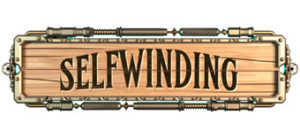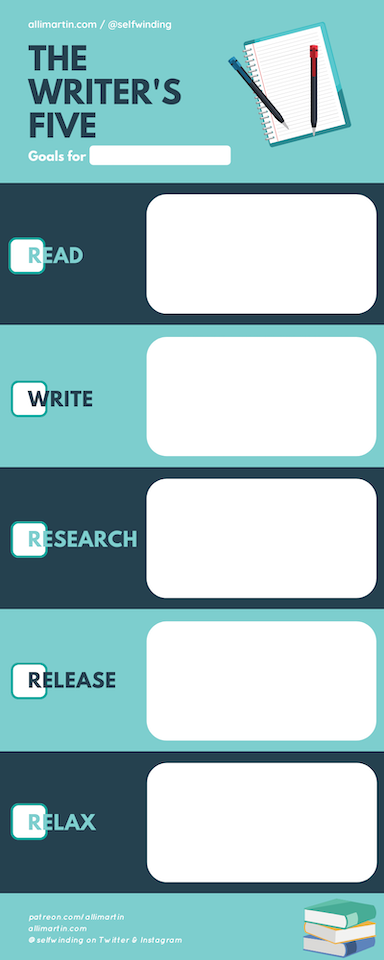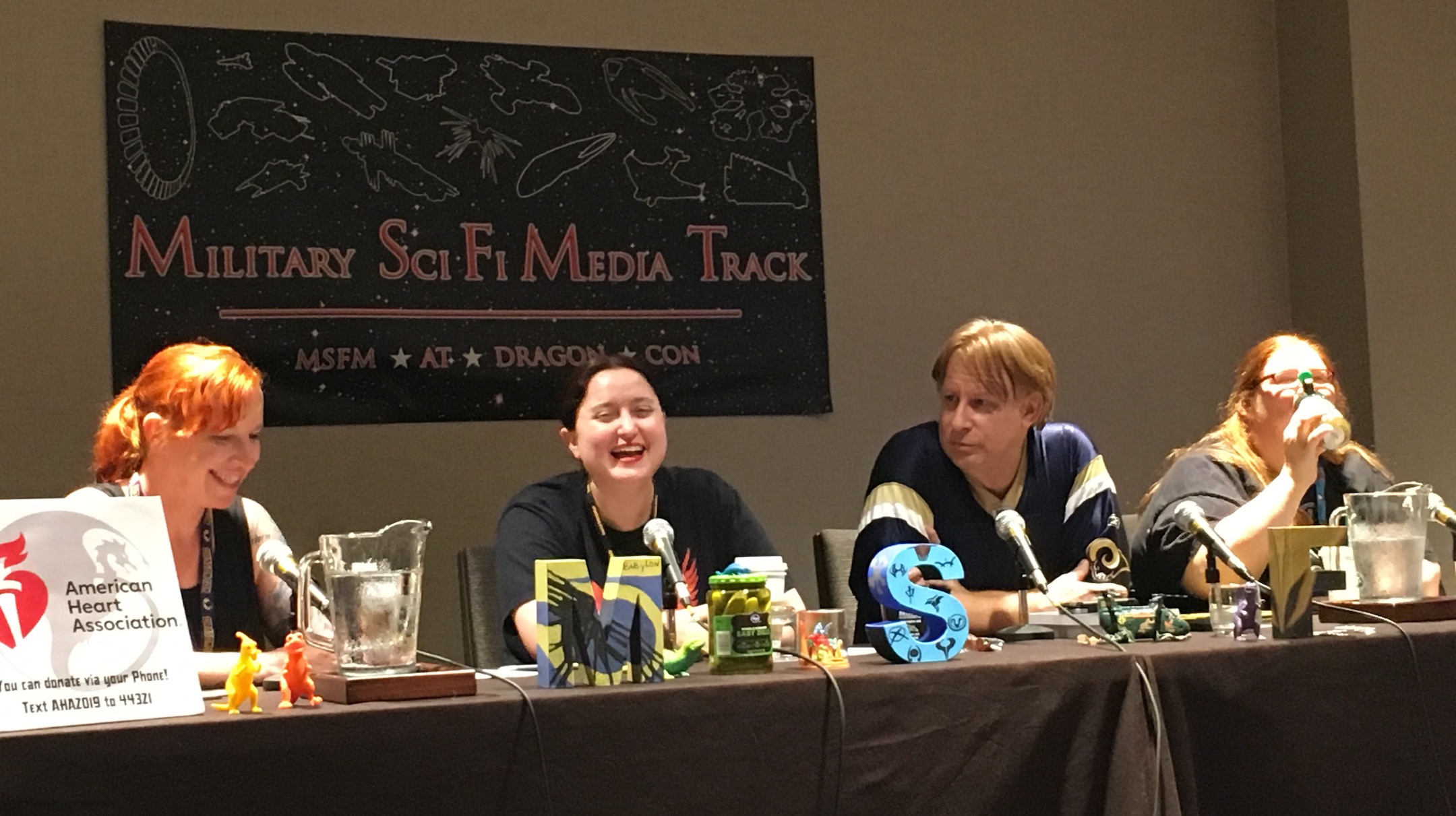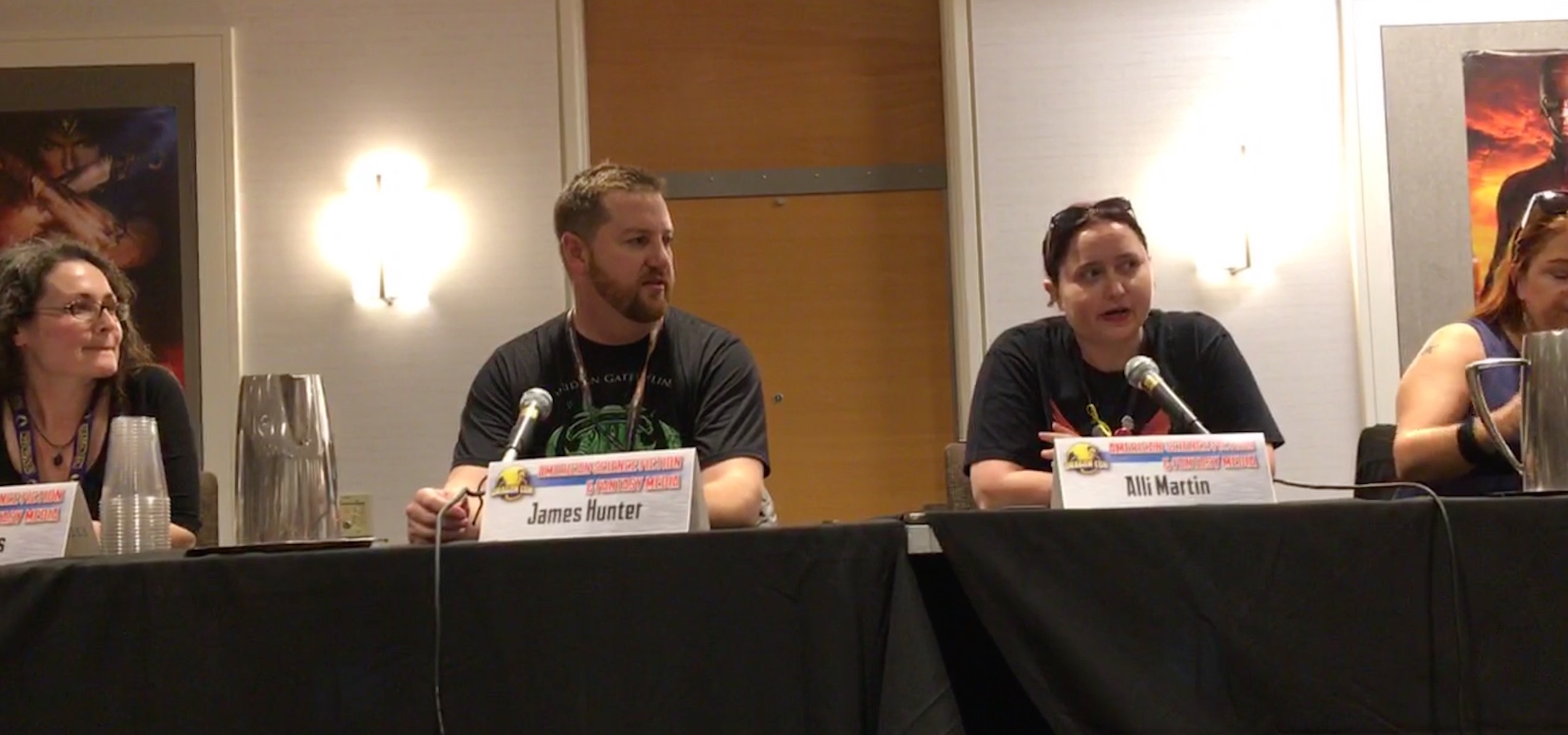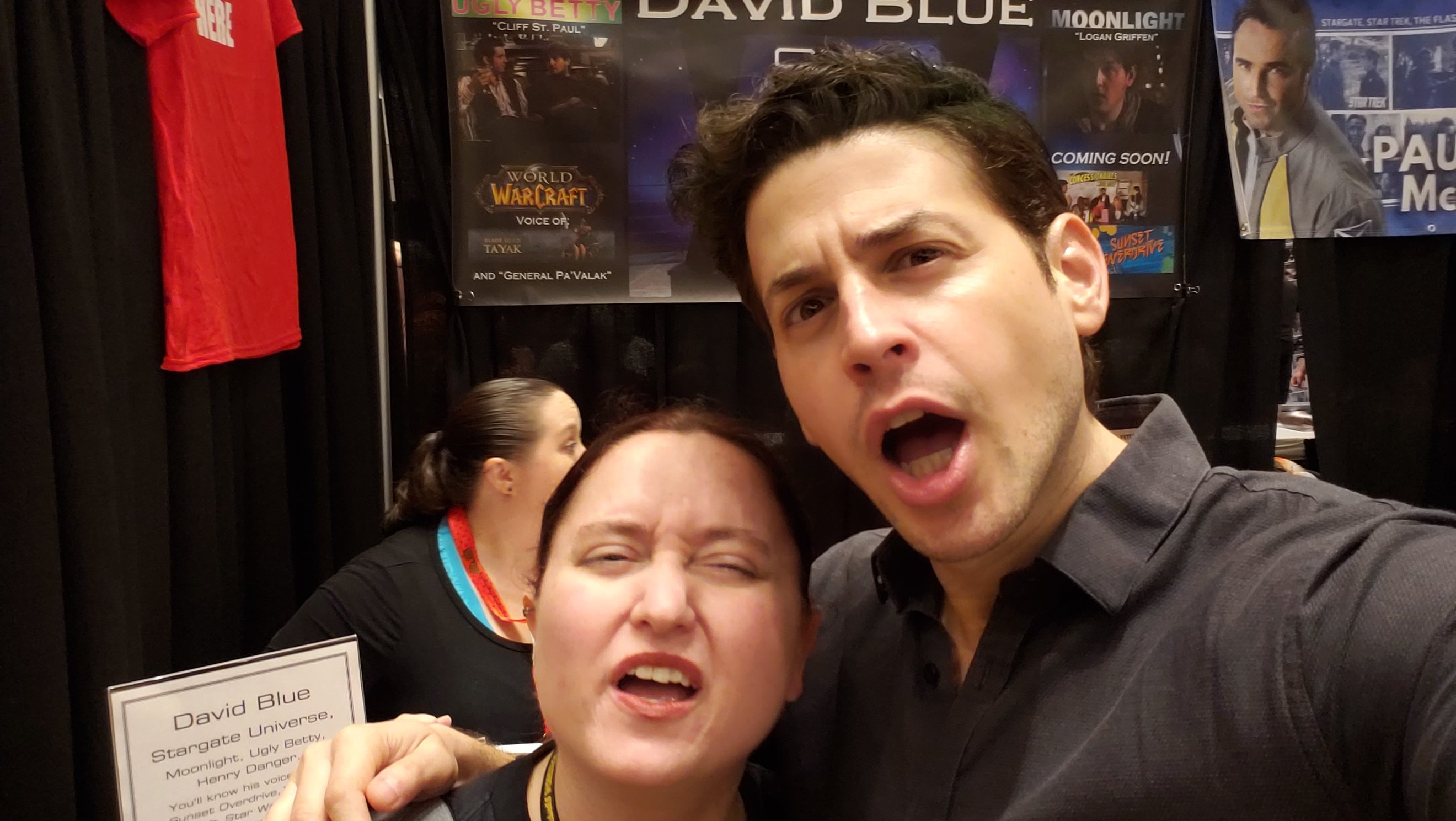I’m great at meeting metric-based goals, but in meeting those goals I sometimes lose sight of the goals driving those metrics. I can write a specific number of words, but those words don’t always resolve into completed works. I know creatives who struggle with figuring out how to break big goals (like “write a novel”) into smaller, more manageable tasks. And I know other creatives who set goals, get distracted, and when they look up again, the whole year is gone!
In an effort to stay focused, this year I decided to break my goals into smaller, targeted tasks that can each be completed in about a month. These are designed to focus my attention, make progress in specific ways, and measure my overall progress with landmarks.
I provided an overview of the Writer’s Five in my January Write Life post, A Contemplative January, but now I’m coming to you with a resource to facilitate writing and tracking your goals.
Resource: Writer’s Five Worksheet
The Writer’s Five Worksheet is a blank sheet for you to write and track your goals for the month. Each goal is based around one verb: read, write, research, release, and relax. Basing the goals around a simple verb already tells you a lot about what your goals will be, thus making them easier to compose.
For each goal, name one specific thing you will do. Make sure it’s something you can accomplish in about a month, so “Write a novel” shouldn’t be on your list, but maybe “Write Chapter 1” will be.
Read: Name a specific book you will read.
If you have other reading goals and are a regular reader, I encourage you to select a book (or two) you’ve either been struggling to read or putting off for some reason. One of the books I selected for February was a book I started six months ago and just hadn’t finished. You might also select books you “should” be reading, such as a book published in your genre in the last five years.
Write: Name a specific project and the part of the project you will write.
You might focus on a single chapter or section of your novel, or a specific stage of writing, for example, “Revise short story.” Remember, the task doesn’t have to take a month to finish, but should be small enough to complete within a month.
Research: Name a specific subject to research.
Instead of a subject to research, you might decide to read a nonfiction book about a topic that interests you or a writing craft book. If you do select a subject to research, consider listing what research you’re planning to do this month, for example, “Read wikipedia entries about the Golden Age of Piracy.”
Release: Name a piece of writing you will release or submit.
Releasing writing into the world doesn’t always need to be to a potential publisher. Many of my release goals will be about submitting works-in-progress to critique partners. You might even decide your release goal is to send a chapter or story to me!
Relax: Name one thing you will do for yourself and your self-care.
It can be easy to forget that a rested mind works more efficiently and creatively. Picking one thing to do each month that is just for you and your mental (or physical) health is about letting yourself rest and recharge so you can later tackle all your other goals.
Download a Writer’s Five Worksheet for yourself. As you set your goals for the next month, consider what you’ve been avoiding, are struggling with, or need some extra motivation to complete. What is the smallest thing you can do to start working on that project? Maybe that’s your first goal.
If you post your goals on Twitter or Instagram, don’t forget to tag @selfwinding so I can cheer you on.
Want a Writer’s Five Worksheet in another color? A whole rainbow is available to patrons pledging $2 or more per month at my Patreon campaign. As a patron you’ll be able to download Bust-Ass Blue, Gangbusters Green, Productive Peach, Vigorous Violet, Can-Do Cranberry, and Successful Steampunk (spoilers: it’s brown), in addition to Tenacious Teal.
I started this month as many other writers did: considering my goals for the year. The past few years I’ve been in flux as I establish my editorial business, build my Patreon campaign, and write, write, (revise), write with the goal of traditional publishing. Many of the goals I set at the start of previous years have morphed or been entirely discarded because I was too ambitious, didn’t see the steps I needed to take between the start and the end, or life had other plans. (Last year fell into that latter category.)
While I still have a few big picture goals for the year—such as a word count goal (200K) and some habit goals (write 250 words or for 1 hour every day)—I’ve decided to focus on more short-term goals this year. Which is why I now present to you: The Semi-Monthly Writer’s Five.
 What is The Semi-Monthly Writer’s Five? It’s five things I should be able to do in about a month that will contribute to my long-term writing goals. I will be centering these goals around the verbs “read,” “write,” “research,” “release,” and “relax.” (Did I stretch to make these all R-sounds? Yes.)
What is The Semi-Monthly Writer’s Five? It’s five things I should be able to do in about a month that will contribute to my long-term writing goals. I will be centering these goals around the verbs “read,” “write,” “research,” “release,” and “relax.” (Did I stretch to make these all R-sounds? Yes.)
What that means is each month I will make sure to:
-
Read a specific book.
-
Write a specific story.
-
Research a specific topic (which often will actually be reading a different book).
-
Release a piece of writing (whether that’s sending for queries, submissions, or feedback).
-
Relax. No, like, seriously, this is self-care time.
Absolutely none of these goals will be metric based because too often I phone in performance on metric-based goals. Can I write every day? Hell yeah. Can I write something productive every day? *innocent whistling and avoiding eye contact* I need goals that will force me to finish a thing, hence, the Writer’s Five.
When I finish all five things, I set five new goals and I get a cookie. (I mean, the cookie may sometimes be cheesecake or a brownie or a shiny sticker, but you get the idea.)
January/February Writer’s Five:
- Read: Read Murder, Magic, & What We Wore and Call Down the Hawk
I started the month with two books in progress and aimed to finish both. One, because I started it last July and I should actually finish it, and the other because it’s due back to the library. - Write: Revise the Bodyswap Grim Reaper story
The first draft is done, but I need to go back through to make the story cohesive, deepen the POV, and clarify the motivations of the characters. (I also need to pick which ending I want.) - Research: Read The Invention of Murder
I’ve been working my way through this dense nonfiction book, but I doubt I’ll finish before it’s due back to the library. This may return to the Writer’s Five later this year. Current goal: read 250 pages. - Release: Send the Bodyswap Grim Reaper story to critique partners
This goal is obviously contingent on me successfully completing the Write goal, but I can start lining up readers. - Relax: Take a walk
Even though I now have other exercise equipment, an occasional walk feels like the thing to reconnect me to the surrounding world.
Want to join me in the Writer’s Five? Leave a comment below with the five things you’ll be doing this month-ish. Try to list something you’ll read, write, research, release, and do to relax.
For full access to The Write Life, sign up on Patreon for $1 or more per month. You’ll also receive a personalized thank you in a future edition of The Write Life.
I hesitate to say that in December I took a break. (I mean, my to-do lists are intense, and a lot of community planning happens in December, so it is by no means a light month.) But, no, yeah, I took a break.
In November, I wrote more of my nonfiction project than I had planned, never taking the time to do the other thing I meant to—devote some hours to actually finishing the in-progress short stories I have on the drafting table. And when I got to December I just… didn’t… want to? I also wasn’t feeling too terribly interested in adding more words to the nonfiction project, or planning the next novel, or… anything, so I decided to take the hint, do myself a favor, and cut myself some slack.
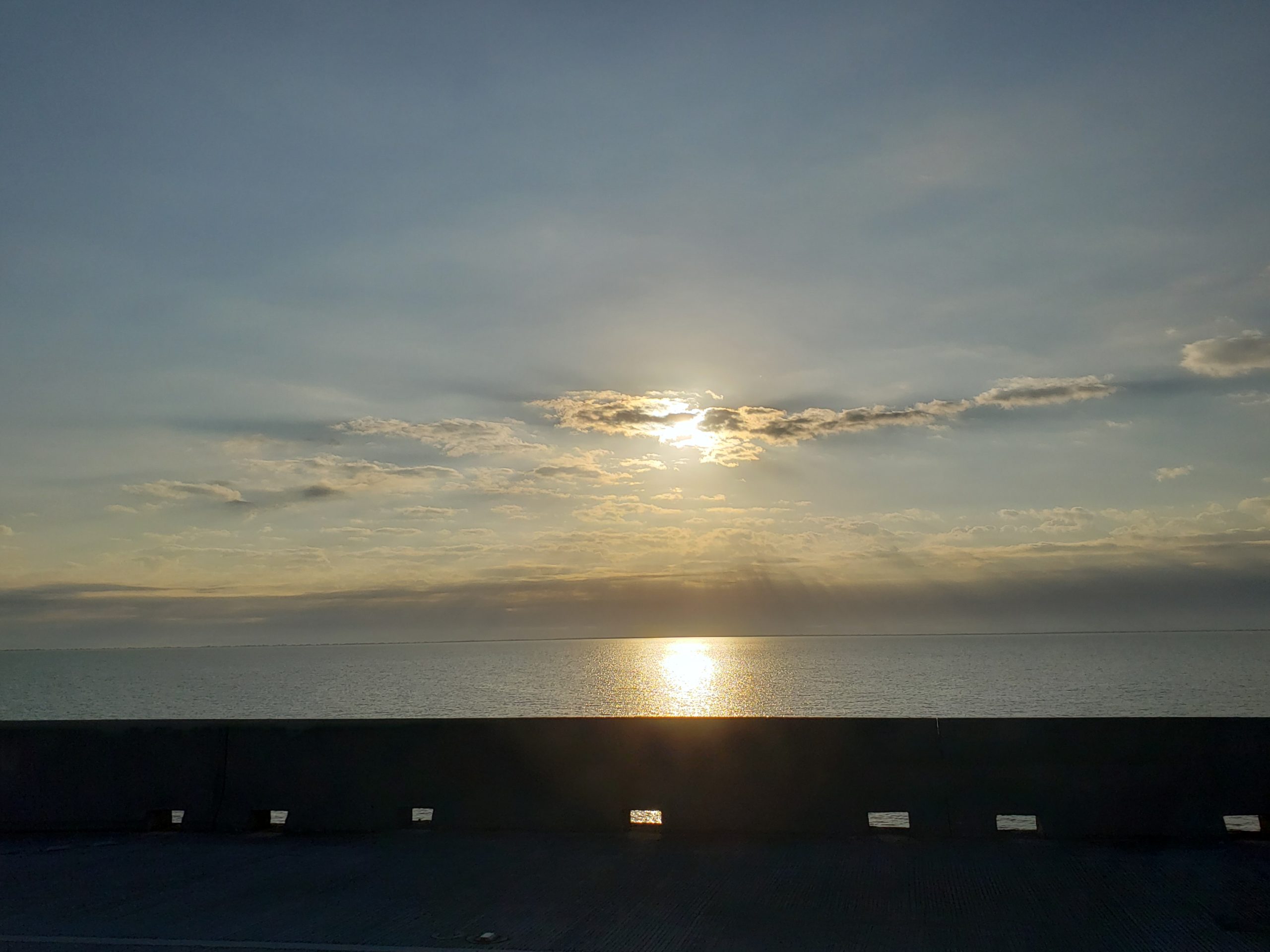
I still had 15,000 words to go in my year goal to hit 250K, so I did write things, but mostly I solicited prompts from friends, wrote some silly things that made me laugh, and made some headway on things like this post, Writer Resources, and a few other projects and assignments due in January. I was pretty careful to balance play with work and to emphasize play over work, to read more than write, to watch a bunch of movies (StarWars marathon, am I right?), and to rest. Like, just in general, to rest.
2019 has been a very long year. For me personally an uncle and an aunt passed away this year, I’ve been plagued by a series of minor inconveniences which are funnier when you’re not dealing with grief, my workload and therefore income has been uneven and unpredictable, and my anxiety has been spiking and helping trigger bouts of depression. And a lot of this came to a head in August and has been a railroading me into exhaustion day in and day out since then. August to November was a very long four months. I needed a nap. So I took one.
My December was not about creativity by any means. The month was about recharging. I read five books, watched at least nine movies (oh, Star Wars), and I even sometimes went out just to be somewhere else.
I don’t have a happy, satisfied wrap-up to this because I still have so much to do and I’m still overworked, exhausted, and anxious, but I can feel a difference between how I started this month and how I ended it. My problems are still there, but a breather has helped me feel (sort of) more equipped to deal with them.
For full access to The Write Life, sign up on Patreon for $1 or more per month. You’ll also receive a personalized thank you in a future edition of The Write Life.
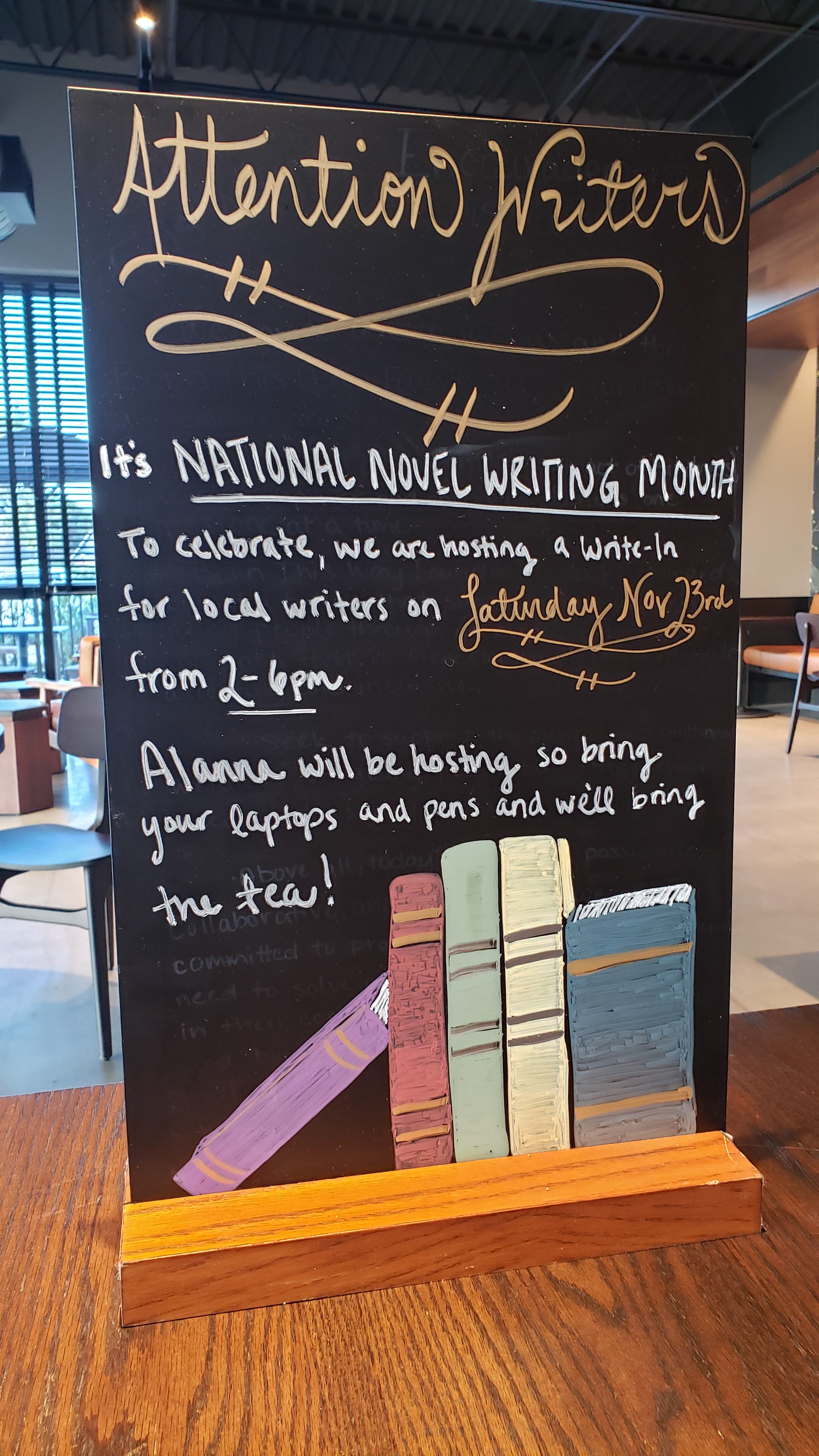 November means National Novel Writing Month. Instead of talking about word counts or impressive sprints and slogs to writing 50,000 words, I want to share a little about the various activities I participated in during the month because even though I was sick and homebound for a week, it was still a lot.
November means National Novel Writing Month. Instead of talking about word counts or impressive sprints and slogs to writing 50,000 words, I want to share a little about the various activities I participated in during the month because even though I was sick and homebound for a week, it was still a lot.
Weekly Write-Ins
My writing group once again opened its doors to welcome NaNOrlando writers to join us for our weekly write-in. The Central Florida Inklings is currently at capacity, but we figure for one month out of the year we can uncomfortably cram a few extra laptops at a table or spread out to fully take over our usual Starbucks. Every year a few extra writers join us, and we love having them for the month—it’s good to meet new people.
Hogsmeade Write-In
Early in the month, I lead a write-in at one of my favorite places to write: the Wizarding World of Harry Potter. Five other writers joined me behind The Three Broomsticks to write some truly magical words and reap some butterbeer-flavored rewards. It was a completely gorgeous (and mercifully cooler) day in which we each wrote about 2,000 words. One family incredulously asked us, “You pay to come into the parks to stare at your computers?” Sometimes the benefits of an annual pass (or Universal employment) are difficult to explain to others.
Write Around Disney World
Right in the center of the month was the pièce de résistance concerning the NaNOrlando events. On November 16, I and the other Orlando region MLs lead 40+ writers around Disney property on boats, buses, and monorails to resort lobbies and cafeterias to write as many words as we could on this traveling write-in.
This event is my favorite every year because it’s so unusual, so fun, and so big.
Descending on and taking over the lobbies at the Polynesian and Grand Floridian makes me happy. I love threading between tourists and seeing so many writers on their laptops, focus firmly attached to their novels. It’s also a great opportunity to say hello to writers I only hang out with once a year and also to meet new friendly faces. This year we even had someone come down from Atlanta just for the event!
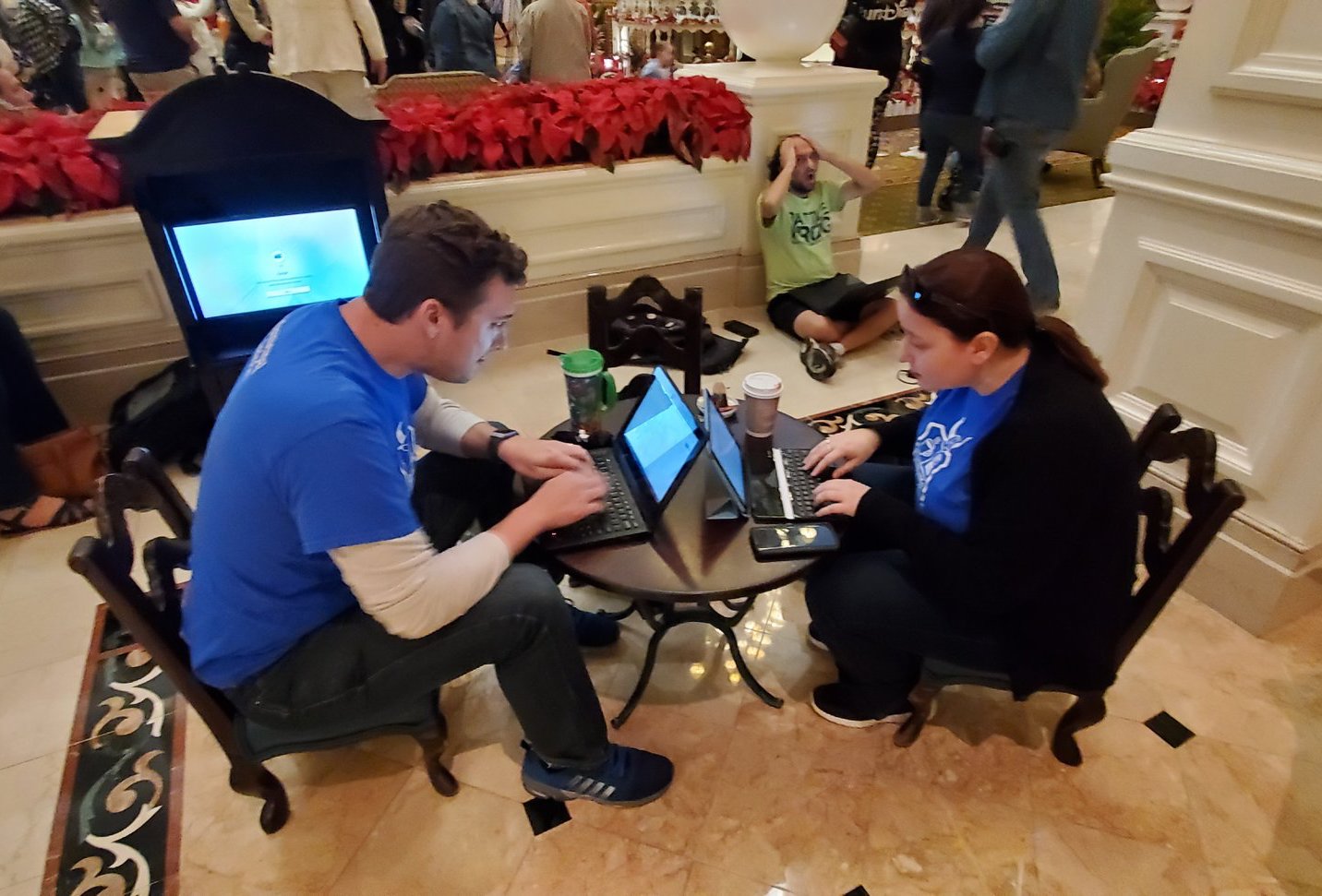 Brad Shreffler and I have been working together to build the NaNOrlando region for the last four years, and while Write Around Disney World is a tradition on its own, Brad and I have another tradition that we partook in this year: our annual picture writing at the kids table. When NaNoWriMo tells you that you can write anywhere, they mean it.
Brad Shreffler and I have been working together to build the NaNOrlando region for the last four years, and while Write Around Disney World is a tradition on its own, Brad and I have another tradition that we partook in this year: our annual picture writing at the kids table. When NaNoWriMo tells you that you can write anywhere, they mean it.
Even though I was sick for a week, out of town for a few days, and had relatives visiting, I still managed to get to ten write-ins. Which is more than I would have thought given that crammed schedule. But my commitment to attending write-ins during November is a testament to how much I believe writing with people increases my productivity and fulfills an important need in my writing life. Writing is all too often a solitary endeavor, and I believe it’s important to connect to a community and remember that through all the private, quiet struggles I might be having with my word count, revisions, or confidence, I’m not alone.
For full access to The Write Life, sign up on Patreon for $1 or more per month. You’ll also receive a personalized thank you in a future edition of The Write Life.
 October is NaNo-prep for many people. The last few years I’ve been working on the same novel, so prep usually consisted of me spending the month re-reading what I’d already written, taking notes on what was missing, and tweaking the outline. But this year that novel gets a break and I’m using NaNoWriMo for a major rebellion.
October is NaNo-prep for many people. The last few years I’ve been working on the same novel, so prep usually consisted of me spending the month re-reading what I’d already written, taking notes on what was missing, and tweaking the outline. But this year that novel gets a break and I’m using NaNoWriMo for a major rebellion.
The main project I’m working on is drafting three to four sample chapters of a nonfiction book on writing communities. The outline was mostly complete before October, but I spent a little time cleaning up and refining the outline and confirming exactly which chapters I wanted to write during November. (I’m actually really excited about five chapters, so I might draft all five just to get them out of my head.)
A handful of chapters won’t get me to the NaNoWriMo 50K (also I’m in a challenge to write at least 100 words of SFF every day this year), so I needed to figure out what else I could write during the month to hit that final word count.
I’ve been playing with short stories on and off this year, and decided at least one thing I could do was put ends to some of the beginnings I have. I went through my collection of WIPs and picked which ones I wanted to work on during the month. I jotted some thoughts about where these stories were going and how many words it would take to get me there. In the end, I picked seven short stories, which should net me around 20,000 words.
(I also picked a handful of prompts from The Short Story Starter so if I feel inspired to start something new, I have a place to start from.)
Lastly, I have a blog project I’ve been wanting to draft in one fell swoop, which should be somewhere around 10,000 words. If I’m short on the 50K word count, or if I stall out on one of these projects, I’ll start writing character sketches and scenes to help me understand the world and characters of the next novel I’m planning to write. Will this material make it to a novel? No way! Except in the iceberg sense of novel writing, wherein I know 90% more than what I’m showing the reader, but it’s work I need to do in order to understand the characters and how they interact in their world. (Also it’s words for NaNoWriMo!)
So that’s my NaNo Plan-o. A little more complicated than in previous years, but extremely flexible in terms of what I’ll be working on day to day and how I’m actually breaking down my 50K words.
Are you writing for NaNoWriMo? What are you writing?
For full access to The Write Life, sign up on Patreon for $1 or more per month. You’ll also receive a personalized thank you in a future edition of The Write Life.
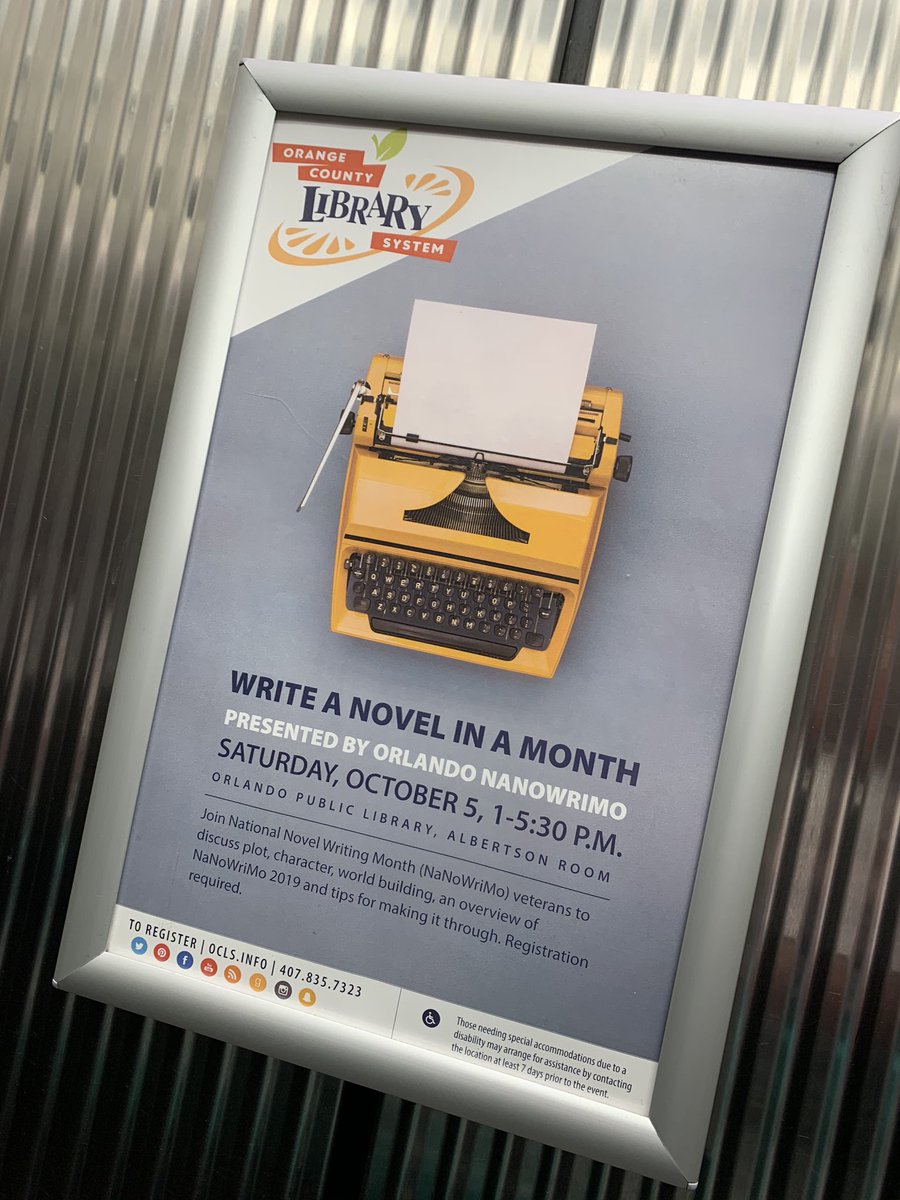
Photo by dreamstobecome
You might think The Write Life is up a little later this month because of the absolute insanity that was my life in September (revisions, editing projects, falls, and escaped cats, oh my!), but it was really so I could wait and post about the NaNOrlando Writers Conference.
In 2017, I hoofed it to the Orlando Public Library each week for a weekly NaNoWriMo prep session. The sessions were great, the participants beautiful, but the turnout was relatively low and the time and stress on me was intense. And then I thought, there must be a better way.
Last year I reimagined our weekly workshop series into a half-day writing conference. This year we grew that conference to include twelve local authors, editors, and professors to prepare writers for National Novel Writing Month. Our panels included strategies for finishing a first draft, developing characters and their arcs, basic plot structures, worldbuilding and more. We offered nine workshops in total, spread across three meeting rooms, and afterwards offered one-on-one sessions for about twenty writers.
Aside from making sure everything ran smoothly, I was responsible for speaking at NaNoWriMo 101 as one of the region’s three Municipal Liaisons, and moderating the panel Rebels: Not Writing a Novel, for anyone, y’know, not writing a novel for NaNo. (Which this year I am not writing a novel—ask me about my other projects!)
We had sixty-three NaNOrlando writers come out to participate, asking great questions and confidently sharing their story ideas and problems. NaNaWriMo is a huge undertaking, and even the Orlando region is pretty large, so I love getting to connect more personally to local authors, help them through a problem, and generally support them in completing their novel. Having such a great turnout for this event makes me feel particularly good about the time I spend investing in my writing community. ❤️
I want to take a moment to publicly thank all the instructors and OCLS staff who helped make the NaNOrlando Writing Conference happen—
Sarah Fisk from OCLS
Racquel Henry, L.E. Perez, and Arielle Haughee from Writer’s Atelier
Elle E. Ire & José Iriarte
Ella Martin
Jenny Broom
Catherine Carson
Jennie Jarvis
And of course my co-MLs, Brad Shreffler and Nicole Dennis
Many thanks to Aly for letting me use one of her photos after I completely forgot to take any.
For full access to The Write Life, sign up on Patreon for $1 or more per month. You’ll also receive a personalized thank you in a future edition of The Write Life.
Yep, you guessed it: it’s the annual post about DragonCon.
As always, DragonCon is a magical place in which time doesn’t flow correctly. It is both so long and way too short, wherein on Friday you’re thinking about how much time you have to do everything and on Monday you’re begging for one more day of con. (Even when I’m ready to go home on Monday, I’m still half-slumped in my chair, ready to go to the next panel.) On the way home I was basically two hours out of synch and was very confused when the sun set at what felt like 6pm.
This confusion of time fits perfectly with the fact that my theme this year was clearly time travel since I was on three different panels dealing with time travel.
Let’s move on to some highlights:
- I was on two separate panels in which time travel was the main topic. With the Alternate & Historical Fiction Track we discussed time travel in general, hitting favorite time travel stories in TV, movies, and books (and not-so favorite stories as well). Since this was an open-ended discussion, it meant I still got to talk about Stargate: SG-1 which is always a plus.
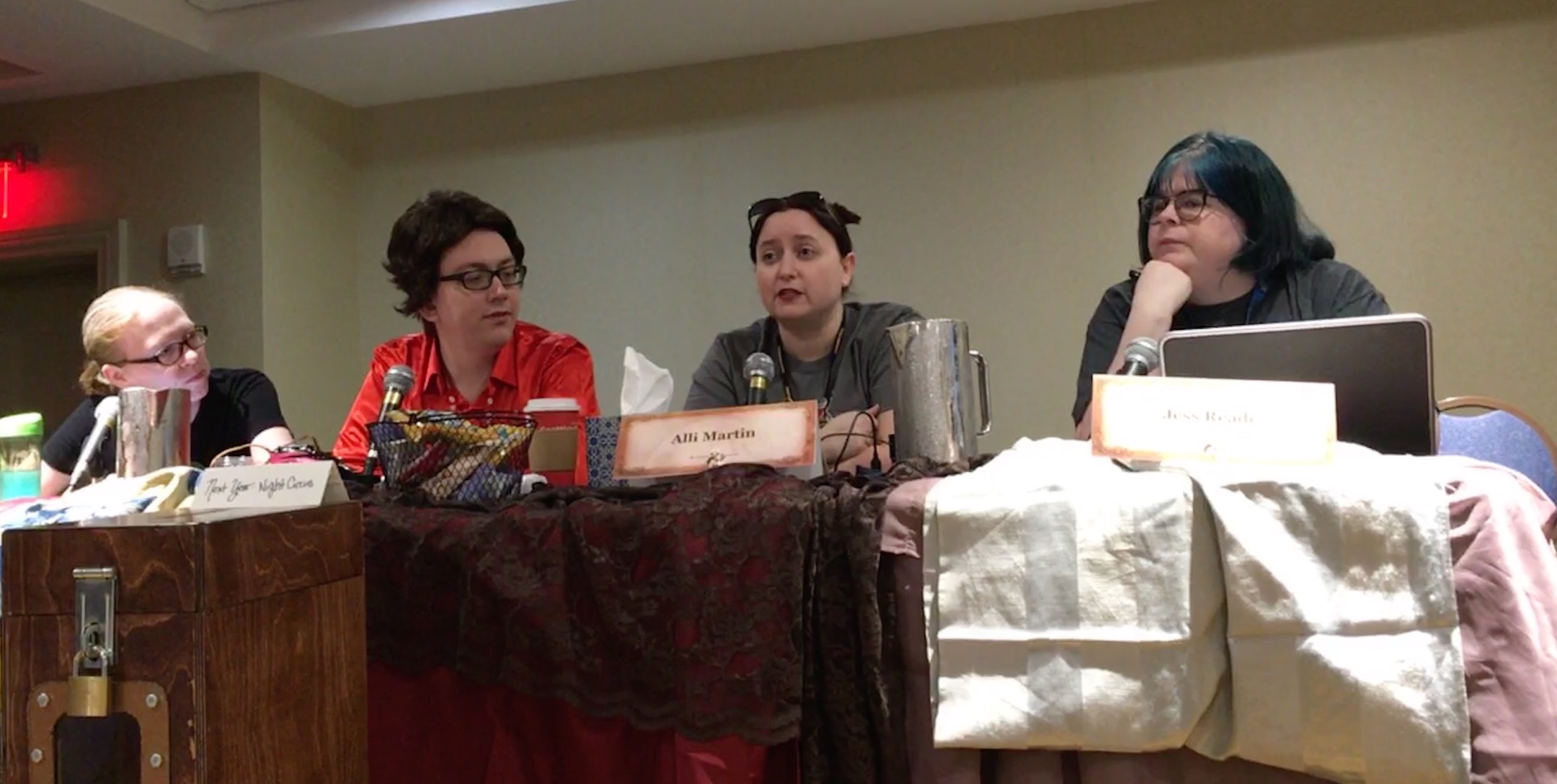
- Over on the Military Sci-Fi Media track, in the panel “How Do YOU Time Travel?” we focused more on the mechanics and science of time travel since I was on a panel with two PhD astrophysicists!
Let’s pause on that for a moment. Here was the panelist line up for that panel:
PhD astrophysicist
PhD astrophysicist
me, MFA FictionBoth astrophysicists were fantastic about explaining complicated real and theoretical physics in succinct and understandable ways, which kept the conversation from getting bogged down. I was able to interject on story-related motivations for time travel and got to explain why I prefer the Many Worlds theory of the multiverse as it relates to story consequences and angst.
- American Sci-Fi & Fantasy Media invited me to a fan panel about The Umbrella Academy, in which, yeah, I also got to talk about time travel. I wound up being the only panelist who was introduced to the comic before the series and provided a lot of insight about the source material. (Many thanks to those in the audience who assisted with remembering single panels that contained relevant details!) The discussion was one of the best fan panels I attended all weekend, and I appreciate how much enthusiasm everyone brought to talk about this family of misfits.
- I spent Saturday night camped out in the Alternate & Historical Fiction Track learning about the history of séances and phony psychics, pirates, and women in history. I have a long list of books to add to the TBR pile and a renewed itch to work on Gay Airship Pirates. Nothing is more inspirational than listening to how other authors worked through the same problems that are plaguing me.
- On a personal note, I had completely forgotten that David Blue (Eli Wallace from Stargate Universe) was from FL and attended the University of Central Florida. This resulted in both of us dredging our memories to try to figure out how he recognized my face. No definitive conclusions, but our selfie game is A+.
Many thanks to Lisa for being a photographer while I was on panels.
For full access to The Write Life, sign up on Patreon for $1 or more per month. You’ll also receive a personalized thank you in a future edition of The Write Life.
This month was all about workshops—workshops I attended and workshops I presented.
My first stop was the Orange County Library to learn about world building from Arielle Haughee. Her approach to world building starts with creating maps, ranging from the broad to the more specific aspects of the world. I tend to make maps late in my drafting process—you know, after I’ve written the location of the main character’s house and then written something else that completely contradicts that. With Arielle’s process, I could have those details knocked out in advance and have some potential ideas for conflicts and obstacles presented by the distribution of resources in the world and difficulty of the terrain and transportation. Basically, her presentation knocked my planning socks off, and has encouraged me to go play with the mapmaking app I found a few months ago.
The next stop in my writerly education was the Central Florida Inklings where I hosted Saritza Hernandez, Senior Literary Agent at Corvisiero Literary Agency. Saritza talked to my writing group about preparing your manuscript for submission to a literary agent or publisher and shared tips for writing a query letter and synopsis. Saritza broke down the need for a literary agent (even for self-published authors) and clearly described what will encourage an agent to keep reading your submission. She also talked about ways to research the market, giving me a few additional ideas to work into my process.
 My last workshop of the month was back at the Orange County Library, but this time I was presenting. I shared my love of steampunk, breaking down the essential elements of the genre and helping other writers figure out what makes a story steampunk. (Hint: it’s more than just cogs and corsets, gears and goggles.) I covered 19th century aesthetics, technology, and social issues, as well as character and story tropes specific to steampunk. This and other presentations will be available by the end of the year on Patreon for patrons pledging $7 or more.
My last workshop of the month was back at the Orange County Library, but this time I was presenting. I shared my love of steampunk, breaking down the essential elements of the genre and helping other writers figure out what makes a story steampunk. (Hint: it’s more than just cogs and corsets, gears and goggles.) I covered 19th century aesthetics, technology, and social issues, as well as character and story tropes specific to steampunk. This and other presentations will be available by the end of the year on Patreon for patrons pledging $7 or more.
In news of other presentations, I’m working on finalizing my schedule for DragonCon where I’ll be on four or five panels across two or three tracks. Right now I’m confirming there are no conflicts across the track schedules, but you can guarantee I’ll be talking about time travel that weekend—maybe more than once!
For full access to The Write Life, sign up on Patreon for $1 or more per month. You’ll also receive a personalized thank you in a future edition of The Write Life.
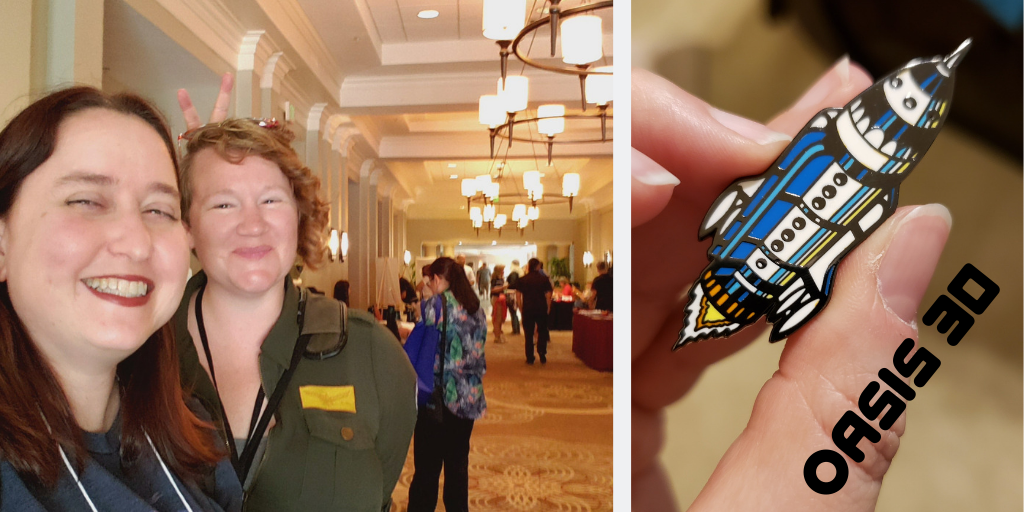 Summer is convention season, which means that just a couple weeks after the OCLS Book Festival, I was driving over to Maitland for a weekend at OASIS, the Orlando Area Science Fiction Society’s annual convention. They were celebrating OASIS 30, but this was my first time in attendance. It’s kind of amazing what can be growing under your nose if you just haven’t looked around to find it.
Summer is convention season, which means that just a couple weeks after the OCLS Book Festival, I was driving over to Maitland for a weekend at OASIS, the Orlando Area Science Fiction Society’s annual convention. They were celebrating OASIS 30, but this was my first time in attendance. It’s kind of amazing what can be growing under your nose if you just haven’t looked around to find it.
While OASIS isn’t strictly a writer convention, its focus is on sci-fi and fantasy books, so there were a lot of authors to talk to and plenty of panel discussions geared toward writing. (And some that were geared more toward science, which were fantastic for inspiration and research.)
One of my favorite panels of the weekend was Brainstorming the Science in Your Science Fiction. A panel of experts in several scientific fields—everything from biologists to rocket scientists—were available to answer writers’ questions about their fictional science. I’ve been struggling with some details about what a character is doing outside of her spaceship when disaster strikes, and they had some fantastic suggestions for various things she could be fixing (and what would put the ship in the most peril).
I also had several great one-on-one conversations with authors about how they run their Patreon campaigns, experiences they’ve had in both traditional and self-publishing, and I received an actionable suggestion for how I might condense my ideas for short fiction and actually write a short story! Overall, it was a very useful convention and I’m so glad that I finally stumbled across their group.
(And thanks to the gentleman who asked before putting bunny ears on KL. Classic joke performed with class.)
For full access to The Write Life, sign up on Patreon for $1 or more per month. You’ll also receive a personalized thank you in a future edition of The Write Life.
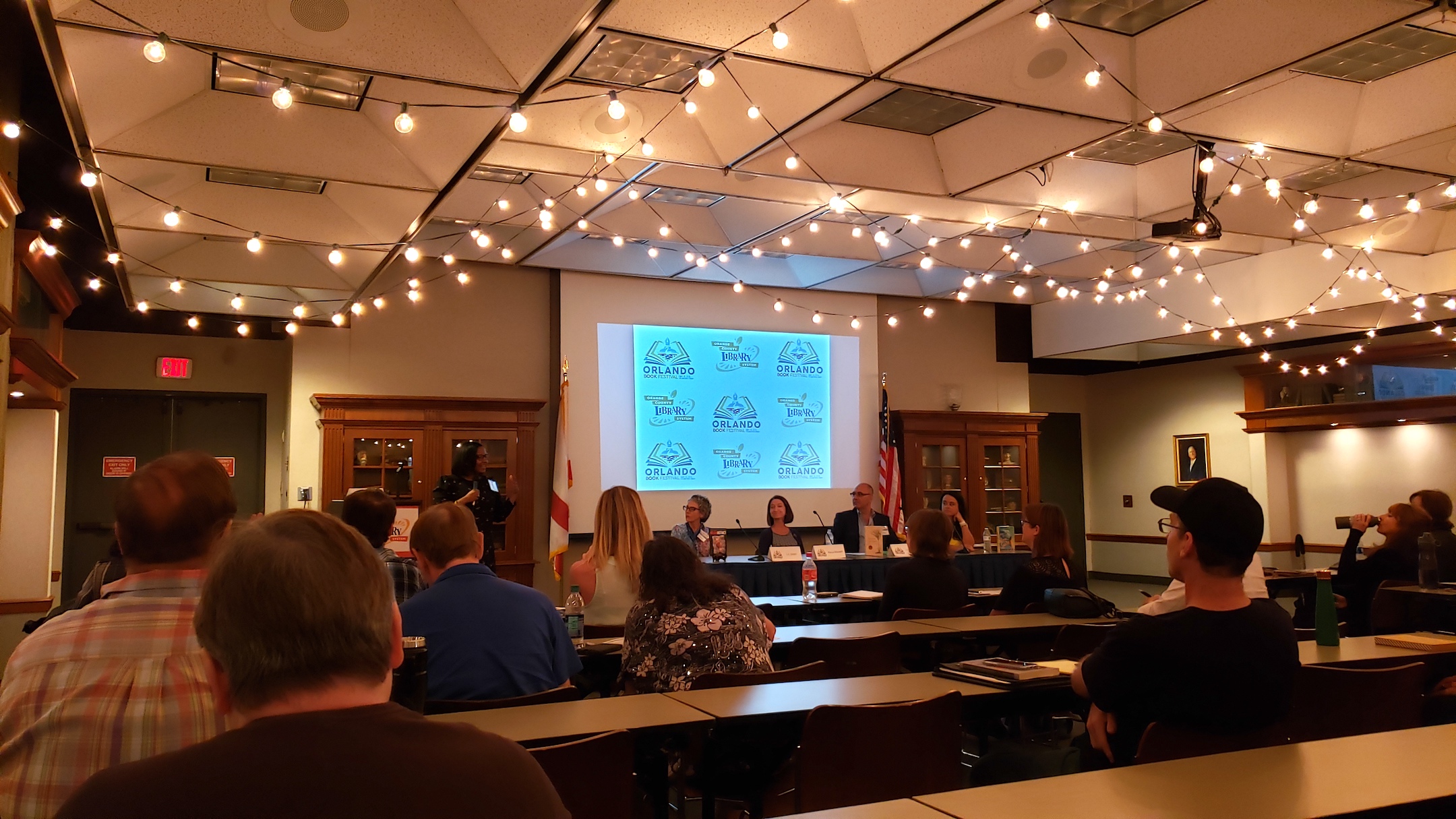 In the middle of the month, I took a one-day vacation to the OCLS Book Festival. I’m calling this a vacation because even though I absolutely wrote that day, and even though I was taking notes in the pursuit of my writing career, the event, schedule, and whole day was a wonderful pause on my go-go-go anxiety and I was instead able to go-go-go with the flow and ended up listening to some wonderful speakers and renewing my motivation to write.
In the middle of the month, I took a one-day vacation to the OCLS Book Festival. I’m calling this a vacation because even though I absolutely wrote that day, and even though I was taking notes in the pursuit of my writing career, the event, schedule, and whole day was a wonderful pause on my go-go-go anxiety and I was instead able to go-go-go with the flow and ended up listening to some wonderful speakers and renewing my motivation to write.
The keynote speakers were Daniel José Older and Delilah Dawson, both authors who I’m only tangentially aware of (because they’ve written Star Wars books, ahem). Both keynotes were exceptional (Daniel’s was an especially fantastic way to kick off the day) and both left me jazzed to write. I left the Book Festival feeling recharged, more motivated, and more confident in my ability to do the work. Refilling my motivational and creative wells was exactly the kind of vacation I needed to get myself back to the novel planning I had put aside the week before.
Following the Book Festival, my friend and I decided to stay out longer to write and then get dinner. The continued flow of the day, the easy decisions and laid back attitude reminded me of what writing is like when everything is flowing smoothly. When I’m not worried about where the story will end, how polished it will look, or what I’m going to do when the story is done, everything has room to breathe. It’s a pretty different state of being from my normal setting, so the escape was welcome and, honestly, necessary. Living with anxiety as a writer and freelancer is a pretty harrowing thing (my disorder does not mix well with the uncertain, unstable life I’ve chosen), so having these moments of peace bolstering my career is essential to keeping myself moving forward.
For full access to The Write Life, sign up on Patreon for $1 or more per month. You’ll also receive a personalized thank you in a future edition of The Write Life.
Ever wonder what it takes to be an every day writer? It’s this: planning, determination, and prioritizing writing.
My friends and I decided it was high time we visit the Magic Kingdom for an epic 12-hour theme park day. I write every day and while I want to prioritize having fun with my friends and enjoying the happiest place on Earth, I don’t want to do that at the expense of my 1,200-day writing streak.
I came to Disney prepared to make sure I got my words in while having a rollicking good time. That meant: fully charging my battery, fully charging my back up battery, shifting an in-progress story to GoogleDocs and making it available offline, and brainstorming what happens in the scene I was planning to write.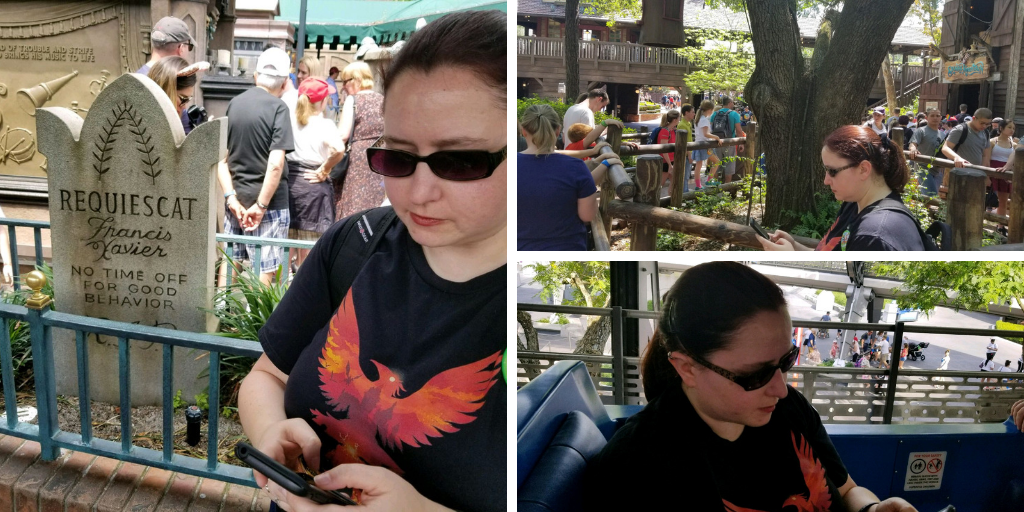
Finding the time to write while we were in the park was a balance between knowing we’d have long wait times for ride queues and not being rude to my friends. I waited until the conversation lulled, or when everyone else seemed equally distracted (or exhausted) before pulling out my phone to write. Because I had thought about the scene beforehand, it was easier to turn a handful of disjointed minutes into productive writing time. In the end I wrote 387 words while at Disney, which is not a staggering amount—I didn’t even finish writing the scene—but my writing streak is in tact and I like some of the ideas that presented themselves in that land of distraction. (Also I will always think it’s funny to write on theme park rides.)
Many thanks to Lara Eckener for being my in-line and on-ride photographer.
For full access to The Write Life, sign up on Patreon for $1 or more per month. You’ll also receive a personalized thank you in a future edition of The Write Life.
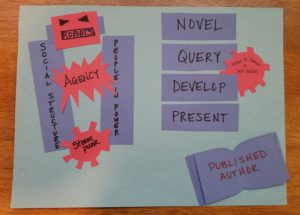 In mid-March my friend ran a mini-workshop on branding for myself and two other author friends. In addition to getting away for the weekend and spending entirely too much time browsing through the rooms and rooms of used books at Chamblin Bookmine, we discussed who we each are as authors, helped refine brand statements, and created vision boards to help guide our individual progress. (Spider-Man and Into the Spider-Verse sneaked into my vision board when I realized my cog looked more like a spider-logo—still on brand.)
In mid-March my friend ran a mini-workshop on branding for myself and two other author friends. In addition to getting away for the weekend and spending entirely too much time browsing through the rooms and rooms of used books at Chamblin Bookmine, we discussed who we each are as authors, helped refine brand statements, and created vision boards to help guide our individual progress. (Spider-Man and Into the Spider-Verse sneaked into my vision board when I realized my cog looked more like a spider-logo—still on brand.)
Talking about who I am as a writer and trying to find a statement to encapsulate both writing about alternate history and writing about the future, as well as writing about robots and gender disparity and all the other bits and bobs of odd sci-fi that surfaces in my thoughts was a bit of a challenge. I had to strip down who I write about and focus on that more than on what I write. It was also a great experience to analyze why the things I write about are important to me. (I mean, I knew already, but being forced to articulate it in a non-glib way was a helpful step in taking myself seriously.)
Even though “branding” can be a scary business word that seems like you’re selling yourself as a product, it’s actually more about figuring out how to articulate what you do as an artist in a bite-sized way. That bite-size isn’t just helpful for selling yourself or your art. It’s also helpful for guiding your creativity and making choices about which opportunities to pursue and how to develop projects. It’s a way to capture who you are as an artist at this point in your career, and I think that’s the thing that I found the most helpful about the weekend.
In the end, I realized I write about various forms of agency. Whether that’s women reclaiming agency in alternate history worlds or robots shucking their programming or proving they are more than their overlords believe them to be, my stories directly deal with characters reclaiming agency and learning to be more human than they ever believed. Since articulating that, it’s been easier for me to write and to capture the story I’m trying to tell. If you’re struggling with your fiction, I apparently recommend working on your brand!
For full access to The Write Life, sign up on Patreon for $1 or more per month. You’ll also receive a personalized thank you in a future edition of The Write Life.
